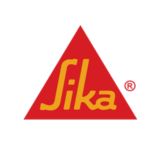
Sikafloor®-297 CF
Sikafloor®-297 CF is a two-component, 100% solids, VOC compliant, sag resistant, epoxy gel used to fill vertical and horizontal, non-moving joints and cracks. It has excellent adhesion to properly prepared concrete, masonry, wood, and metal.
- Easy to use 2:1 mix ratio.
- Non-sag characteristic allows horizontal and vertical application.
- Low VOC / low odor suitable for application in occupied facilities.
- Can be used on large vertical surfaces.
- Very good mechanical and chemical resistance.
- Excellent adhesion on a wide variety of prepared substrates.
- Durable, load-bearing filler suitable to withstand industrial traffic.
Usage
- Typically installed on industrial, commercial, or residential projects to fill new or repair existing non-moving contraction joints, random cracks, and fill minor spalling.
- Ideal to form a round or flat fillet to create a sealed, seamless connection between the floor and vertical surfaces, such as walls, machine bases, and curbs.
Advantages
- Easy to use 2:1 mix ratio.
- Non-sag characteristic allows horizontal and vertical application.
- Low VOC / low odor suitable for application in occupied facilities.
- Can be used on large vertical surfaces.
- Very good mechanical and chemical resistance.
- Excellent adhesion on a wide variety of prepared substrates.
- Durable, load-bearing filler suitable to withstand industrial traffic.
Packaging
Component A : 2 L (0.5 gal US)
Component B : 1 L (0.3 gal US)
Components A+B : 3 L unit (0.8 gal US)
Colour
Clear/ Whitish haze
Product Details
APPROVALS / CERTIFICATES
- Meets the requirements of CFIA and USDA for use in food plants.
Shelf Life
12 months in original unopened packaging.
Storage Conditions
Store dry between 5 °C and 32 °C (41 °F and 89 °F)
Volatile organic compound (VOC) content
< 25 g/L
Application
Mixing Ratio
A:B = 2:1 by volume
Product Temperature
Condition product at temperatures between 18 °C to 30 °C (65 °F to 86 °F) before using.
Ambient Air Temperature
Minimum: 10 °C (50 °F) Maximum: 30 °C (85 °F)
Mixing and application attempted at material, ambient and/or substrate temperature conditions less than 18 °C (65 °F) will result in a decrease in product workability and slower cure rates.
Relative Air Humidity
Maximum 85 % (during application and curing)
Dew Point
Substrate must be at least 3 ˚C (5 ˚F) above the Dew Point to reduce the risk of condensation, which may lead to adhesion failure or “blushing” on the floor finish. Be aware that the substrate temperature may be lower than the ambient temperature.
Substrate Temperature
Minimum: 10 °C (50 °F) Maximum: 30 °C (85 °F)
Do not apply while ambient and substrate temperatures are rising, as pinholes may occur. Ensure there is no vapour drive at the time of application.
Substrate Moisture Content
Moisture content of concrete substrate must be ≤ 4 % by mass (pbw – part by weight) as measured with a Tramex®CME / CMExpert type concrete moisture meter on mechanically prepared surface.
Pot Life
Material Temperature Time
23 °C (73 °F) ~40 minutes
Curing Time
Ambient & Substrate Tack Free Full Cure
Temperature
23 °C (73 °F) ~5 hours ~5 days
Curing times will vary according to ambient air and substrate temperatures and relative humidity.
Freshly applied material should be protected from dampness, condensation, and water for at least 48 hours.
Mechanical, chemical, and physical properties will be fully achieved at full cure.
Consumption
Crack fill: ~28 m/L (~350 ft/US gal.) - 3mm (1/8 in) wide X 10 mm (3/8 in) deep
Corner fillet: ~3.0 m/L (~38 ft/US gal) - 25mm (1 in) radius fillet - floor to wall
Note: Actual coverage rates and material consumption will depend upon crack width, porosity, and profile of substrates. Test sections are recommended to establish correct coverage.
APPLICATION INSTRUCTIONS
SUBSTRATE PREPARATION
The concrete surface must be clean and sound. Remove any dust, laitance, grease, oil, dirt, curing agents, impregnations, wax, foreign matter, coatings, and detritus from the surface by appropriate mechanical means such as shot blasting, grinding or other mechanical means to achieve an open surface profile equivalent to ICRI / CSP 3 – 4 similar in texture to fine sandpaper. The compressive strength of the concrete substrate should be at least 25 MPa (3,625 psi) at 28 days and at least 1.5 MPa (218 psi) in tension at the time of application of Sikafloor®-297 CF.
MIXING
Mix Ratio: A:B 2:1 by volume. Do not hand mix Sikafloor®-297 CF materials. Mechanically mix only.
Pre-mix each component separately. Empty Component B (Hardener) in the correct mix ratio to Component A (Resin). Mix the combined components for at least three (3) minutes, using a low-speed drill (300 - 450 rpm) to minimize entrapping air. Use an Exomixer® or Jiffy type mixing paddle (recommended model) suited to the volume of the mixing container. During the mixing operation, scrape down the sides and bottom of the container with a flat or straight edge trowel at least once, to ensure complete mixing. When completely mixed, Sikafloor®-297 CF should be uniform in colour and consistency. Mix only that quantity which can be used within its pot life.
Extended Mortar: Where additional filler is required to produce a patching or repair mortar, oven dried silica sand may be added at a maximum ratio of 3 parts by weight of oven dried silica sand to 1-part mixed neat resin until the desired consistency is achieved. Important: Avoid adding excess silica sand as material will become too dry to provide adequate adhesion.
APPLICATION
Cracks and Joints: Spread Sikafloor®-297 CF using an appropriate spatula or trowel to force material into voids and finish by smoothing it flush with the adjoining surfaces.
Corner Fillet: Apply a bead of Sikafloor®-297 CF material at the floor to wall interface. Using a rounded or flat cove tool, force the bead of material into the corner to form the appropriate shape and finish by smoothing the edges flush with adjoining surfaces.
CLEAN UP
Clean all tools and equipment with xylol cleaner. Once hardened, product can only be removed mechanically.
